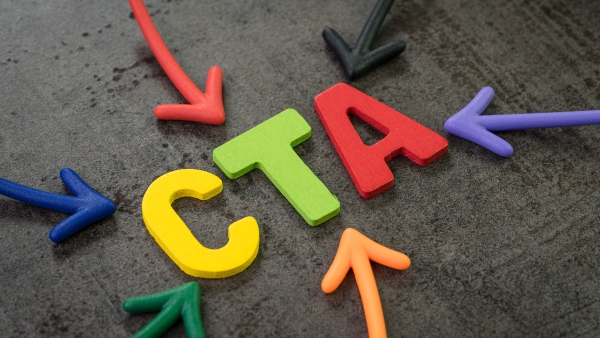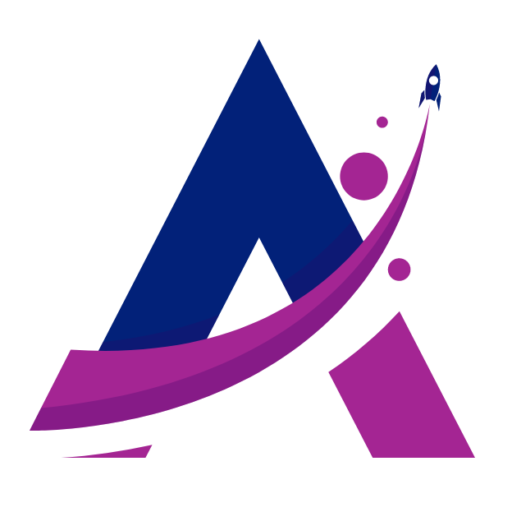Have you ever come across those convincing phrases that invite you to act immediately? These powerful calls to action, known as CTA (Call-to-Action), have the incredible power to boost conversion and drive visitors to take the desired action.
In the world of digital marketing, the CTA is an essential tool to drive audiences to engage more with your brand, whether making a purchase, subscribing to a newsletter, filling out a form or participating in a promotion.
In this article, we’ll explore 10 brilliant examples of CTAs that have the power to convert visitors into engaged customers. Get ready to discover the secret behind the irresistible calls to action!
What is a Call-to-Action (CTA)?
A Call-to-Action (CTA) is a persuasive phraseiva and direct used to encourage visitors to a website, advertisement or marketing content to take a specific action.
Its main objective is to guide the target audience to take concrete action, such as clicking on a button, filling out a form, making a purchase, subscribing to a newsletter or participating in a promotion.
CTA is an essential part of digital marketing strategy as it helps to drive traffic and convert visitors into leads or customers. An effective CTA should be clear, relevant, urgent and aligned with campaign objectives.
When well designed and strategically placed, the CTA can boost engagement and increase conversion rates, making it a powerful tool for marketing.online marketing success.
How does Call-to-Action (CTA) work to drive audiences to take specific actions?
The Call-to-Action (CTA) works as a persuasive stimulus in marketing, directing the public to take specific actions desired by the company.
It is designed to be visually standout and with clear, motivating language, encouraging the user to take immediate action. Using phrases like Buy now, Sign up today, Download our e-book or Take advantage of the discount, the CTA seeks to pique the interest of the target audience and create a sense of urgency.
When placed on landing pages, emails, banners or social media posts, the CTA guides visitors to take a specific action, whether it be making a purchase, filling out a form or subscribing to a newsletter.
With well-designed calls to action, marketing can increase conversion, generate leads, and drive audience engagement.
How important is the CTA to encourage user engagement?
The importance of the Call-to-Action (CTA) in encouraging user engagement is critical to converting visitors into actions desired by the company.
An effective call to action can direct users to take specific actions, such as making a purchase, filling out a form, signing up for a newsletter, or downloading content.
By creating well-designed marketing CTAs, marketing can directly and assertively guide the target audience, influencing their decisions and increasing the likelihood of conversion.
Having clear, compelling CTAs on landing pages, emails, or social media posts can boost audience engagement and interaction, generating leads and fostering customer relationships.
It’s a powerful tool for driving user action, achieving business objectives, and optimizing marketing strategies.

How to use CTA and increase conversion rate?
To increase the conversion rate using the Call-to-Action (CTA), it is essential to follow some effective practices. First, make the CTA clear and visible, using colors and design that stand out on the page.
Use persuasive and direct language, encouraging immediate action. Align the CTA with the content on the page so that it is relevant and coherent. Offer value to the audience by showing how the action will benefit the user. Test different types of CTAs to identify the most effective one for your audience.
Be consistent in using CTAs across different marketing channels. And finally, monitor and analyze the results to adjust and optimize your CTA strategies. These practices will help boost your conversion rate and maximize the impact of calls to action in your marketing campaigns.
3 Essential Elements to Create Effective CTAs
To create effective CTAs (meaning to call to action), it is critical to consider three essential elements. First, the copy should be persuasive and attention-grabbing, using language that encourages action and clearly conveys the value of the offer.
Next, the CTA design must be attractive, with colors and visual elements that stand out on the page, directing the user’s eye to the call to action. Finally, strategic positioning is crucial.
Place the CTA in prominent places on the page, such as at the top, middle or bottom of the content, and make sure it’s easily accessible, whether as a call-to-action button or a link.
With these elements, your marketing CTA will be ready to boost the conversion rate and drive your audience to the desired action. We will now see these three elements in more detail in the next block.
1. Persuasive and Engaging Text
A key element to creating effective CTAs is the use of persuasive and attention-grabbing copy. The CTA is the call to action, and its purpose is to encourage the audience to take a specific action, such as buying a product, subscribing to a newsletter or downloading an e-book.
For this, the text of the CTA must be clear, direct and convincing, clearly conveying the benefit of the action and creating a sense of urgency.
Phrases like Buy now and get 50% off, Download our exclusive e-book today or Join our VIP list to receive special offers are examples of persuasive texts that drive user engagement and increase the conversion rate.
2. Attractive and Flashy Design
Another essential element to creating effective CTAs is an attractive and eye-catching design. The CTA should stand out visually on the page, using contrasting colors and graphic elements that draw the user’s attention.
A well-designed and well-placed call-to-action button can make all the difference in click-through and conversion rates. In addition, the design must be in line with the brand’s visual identity, conveying confidence and professionalism.
It is also important to make the call to action responsive, adapting to different devices and screen sizes, so that all users have a pleasant and intuitive experience. Remember to test different designs to identify which one is most effective for your target audience.
3. Strategic Positioning
The strategic positioning of the CTA is one of the most important factors in ensuring its effectiveness.
It should be placed in strategic places on the page where the user’s eyes naturally focus, such as at the top, at the bottom of relevant content, or near important information.
In addition, it is essential to ensure that the call to action is visible without having to scroll down the page, so that the user does not miss the opportunity to act.
Another effective approach is to use CTAs throughout the content, guiding the reader to the next step, be it a sign-up, purchase or download. Testing different placements and analyzing performance data can help you identify the most effective placement for the CTA on your website.

10 Call-to-Action examples that convert
In the next block, we will present 10 examples of Call-to-Action in marketing (CTA meaning) that have a high conversion power.
These strategies are essential to direct the public to take specific actions, such as signing up for a newsletter, making a purchase, downloading an e-book or participating in a promotion.
CTAs in marketing are essential elements to encourage user engagement and drive results in a digital marketing strategy.
With persuasive texts, attractive designs and strategic positioning, these Call-to-Action buttons are capable of significantly increasing the conversion rate and, consequently, the success of online campaigns. Stay tuned to discover these techniques and apply them to your marketing strategies!
1. Secure your exclusive discount today!
The Call-to-Action (CTA) Secure your exclusive discount today! is highly effective in driving conversion in a variety of sales and marketing contexts. It can be applied in promotional campaigns, flash offers, or to attract new customers to the site.
The persuasive technique used is scarcity, because by emphasizing the exclusivity of the discount and the limited period, a sense of urgency is created in the customer, prompting him to act immediately so as not to miss the opportunity.
In addition, the CTA is direct and objective, focusing on the specific action that the user must take: guaranteeing the discount. This clarity helps to increase the conversion rate, as users know exactly what to expect when they click the button.
2. Sign up now and receive our free e-book.
The Sign up now and get our free ebook CTA is great for attracting leads and building a contact base for content marketing campaigns.
This call-to-action can be used on blogs, websites, landing pages or social networks to encourage visitors to register and receive the e-book as a reward. The persuasive technique used here is value gain.
By offering a free e-book, the company demonstrates value and knowledge in its niche, creating a fair exchange: the user provides their contact details and receives a useful resource in return.
Also, urgency is subtly applied by using the term now, encouraging visitors to act immediately so they don’t miss out on the opportunity to get the e-book.
3. Try it free for 30 days.
The CTA Try it free for 30 days is ideal for convincing potential customers to test a product or service without financial risk. This type of Call-to-Action is commonly used on software sites, applications, online platforms and subscription services. He is ideal for attracting undecided customers or those who are afraid to invest in something unknown.
The persuasive technique used here is social proof and risk minimization. By offering a free trial period, the company demonstrates confidence in its product and allows potential customers to experience its benefits before making any payments.
In addition, the specific 30-day deadline gives a sense of limited commitment, which encourages more people to try the service.
4. Buy now and save 20% on your first purchase.
The CTA Buy now and save 20% on your first purchase is a very effective persuasive strategy to encourage visitors to make an immediate purchase.
This type of Call-to-Action is commonly used in e-commerce, online stores and even service websites that offer products for sale.
It is especially attractive for new customers who are discovering the brand or product, as it offers a savings incentive on the first interaction with the company. The persuasive technique used here is discounting and urgency. By offering a 20% savings on the first purchase, the CTA creates a sense of value and advantage for the customer.
Also, by highlighting the word now, it creates a sense of urgency, encouraging the customer to act quickly so as not to miss an opportunity to save.
5. Click here to watch our live demo.
The CTA Click here to watch our live demo is amazing for companies that offer complex products or services, such as software, online tools, or online courses.
It can be used on sales pages, landing pages or even ads to direct potential customers to watch a live demonstration of the product or service.
The persuasive technique used here is social proof and curiosity. By offering a live demo, the Call-to-Action awakens visitors’ curiosity to learn more about the product or service, in addition to providing an opportunity to demonstrate the value and effectiveness of what is being offered.
Social proof comes into play by suggesting that others have already watched the live demo, which can encourage more people to do the same.
6. Take advantage of the limited time offer – Buy it now!
The Call-to-Action (CTA) Take advantage of this limited time offer – Buy it now! it’s wonderful and can be used in many different marketing contexts.
This technique aims to create a sense of urgency and scarcity, prompting potential customers to take immediate action. By highlighting that the offer is for a limited time, it creates the perception that missing the opportunity will result in a loss, encouraging quick action.
This CTA is effective in promotional campaigns, product launches and sales, where the goal is to boost sales in a short period of time. It can also be applied to paid media ads, marketing emails and landing pages, increasing the chances of conversion.
The combination of direct language and information about the offer attracts the public’s attention, generating the impetus for immediate decision-making.
7. Sign up to receive our weekly updates.
The Call-to-Action (CTA) Sign up for our weekly updates is an effective strategy for capturing leads and building a relationship with your target audience.
It can be used on blogs, corporate websites and e-commerce platforms. The persuasive technique here is to offer value to the user, encouraging him to register to receive relevant content and periodic updates.
By highlighting the weekly frequency of updates, the CTA creates a positive expectation in the user, who can expect news and useful information in their inbox on a regular basis.
The word register indicates a simple action that allows the site visitor to become a member of the community, receiving exclusive content. This strategy is effective for nurturing leads and maintaining an ongoing relationship with potential customers, increasing the chances of conversion over time.
8. Find out how to increase your sales – Download the free guide.
The Call-to-Action (CTA) Find out how to increase your sales – Download the free guide is a powerful strategy to attract the attention of potential customers interested in improving your sales results. This CTA can be used on blogs, sales-related product or service pages, and in email marketing campaigns.
The persuasive technique here is to offer a free guide that promises to reveal secrets to increasing sales. The word discover awakens the curiosity of the target audience, encouraging them to download the guide to obtain valuable information.
Offering free content also generates perceived value, creating a sense of reciprocity in the user, who may be more willing to provide their contact information in exchange for the guide. This lead generation strategy is effective in nurturing audience interest and converting them into engaged customers.

9. Get your free trial today.
The Call-to-Action (CTA) Get Your Free Trial Today is a persuasive approach aimed at encouraging users to try a product or service at no cost, creating an opportunity to convert.
This type of CTA is commonly used on sales pages, landing pages and advertisements, where the objective is to attract potential customers interested in testing a solution before making a definitive purchase.
The persuasive technique behind this CTA is offering something of value at no cost, creating an immediate sense of gain for the user.
The free word sparks interest and the word today creates a sense of urgency, encouraging immediate action. In addition, by providing a free trial, the company demonstrates confidence in the quality of the product or service, which can increase the potential customer’s confidence and lead them to consider the purchase after the trial.
10. Join 100,000+ happy customers. Try it now!
The Call-to-Action (CTA) Join over 100,000 happy customers. Try it now! is a persuasive strategy that uses the principle of social proof to encourage conversion.
This type of CTA is often used on sales pages, landing pages and advertisements, where the objective is to highlight the number of satisfied customers who already use the product or service, creating a sense of confidence and success associated with the brand.
The persuasive technique behind this CTA is to show that many customers are already satisfied with the company, which generates a positive impression and credibility for the target audience.
By mentioning the specific number of satisfied customers (over 100,000), the CTA reinforces the company’s success and invites potential customers to be part of this successful group. The use of the word now creates a sense of urgency, encouraging users to act immediately and try the product or service offered.
Conclusion
Throughout this article, we explore ten examples of effective Call-to-Action (CTA) capable of converting visitors into concrete actions.
Each CTA has been carefully crafted to grab your audience’s attention, engage them emotionally, and encourage decision-making.
From exclusive offers, to free content and social proof, each CTA has the power to direct the user to a conversion journey.
Now it’s up to you to apply these strategies to your marketing campaigns, landing pages and ads.
Remember to balance sentence complexity and variety to create persuasive and engaging copy. Share this knowledge with your colleagues and friends so that everyone can benefit from these powerful conversion techniques.
Let’s achieve surprising results together and boost our business! Share this article with your network and help everyone succeed.
Together, we can conquer new opportunities and turn visitors into satisfied customers. Let’s go ahead and achieve success with our CTAs!



